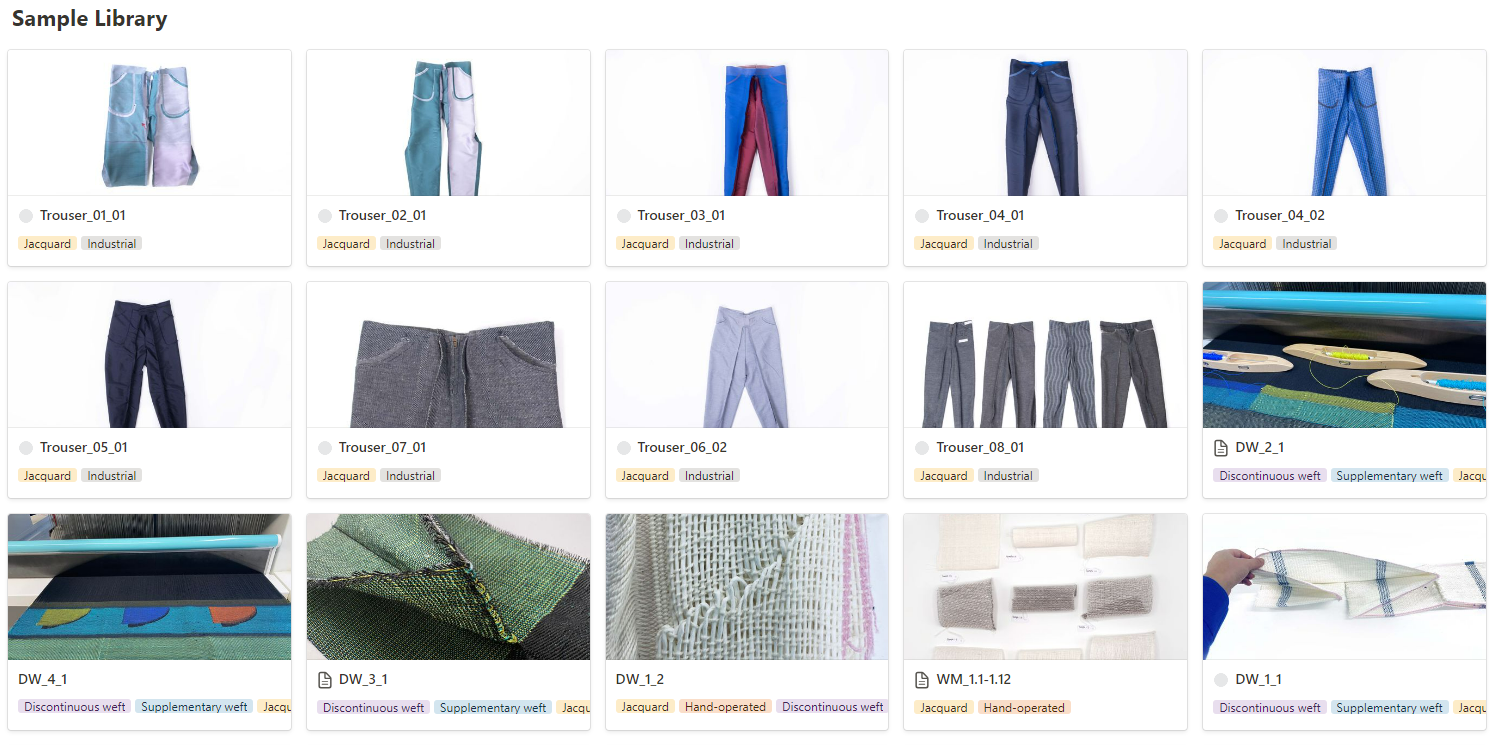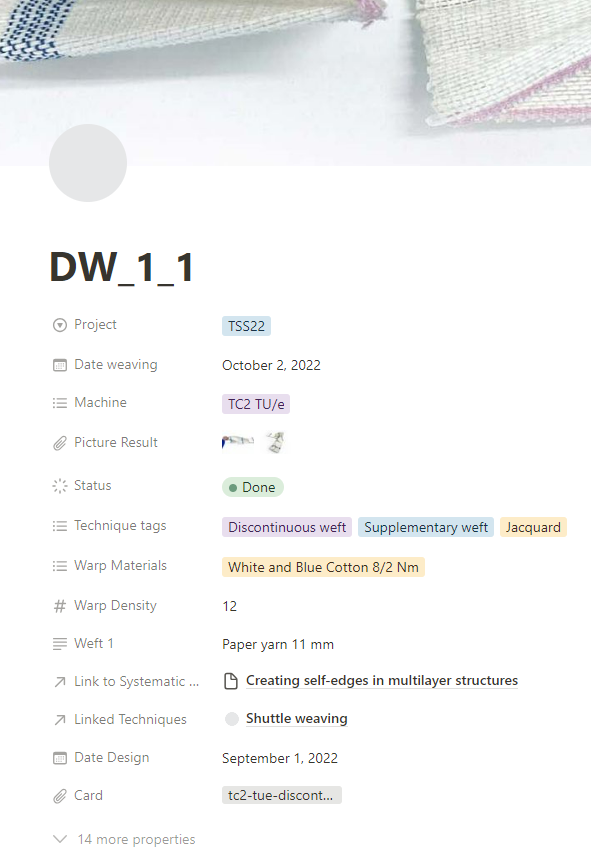As a textile designer, it is important to keep track of the things you have made in an organised manner. Documenting will help to reproduce and communicate your work, and archiving can help to apply the knowledge you gained in future work.
The sample library focuses on documenting and organising samples, and can be used in two ways:
1: Documenting the technical information needed to reproduce samples.
2: Using previously made samples as a starting point or input for your new project.
 Example of the overview page of my sample library
Example of the overview page of my sample library
Template for sample library template in Notion
Each sample can be named and in the template, images, files, drawings, video’s and notes can be added. There are many properties you can add, but you can leave some empty if it is not applicable to your sample.
Next to the technical information such as warp materials and density and the number of picks, there are a few key features I added in this sample library.
1. Technique tags: Here, you can fill in any techniques you have used in the sample. The result of this is that at a later moment, you can filter and search on, for example all samples you have created with a discontinued weft.
2. Link to Technical characterisation: These are pages, where you can collect notes, images, and ideas about the techniques you are working with. In this sample, the page shuttle weaving is linked.
3. Link to Systematic Exploration: If you have a new sample idea, you can link samples out of your sample library as an inspiration to your entry.

I found it is important to keep the documentation system you use flexible because your practice and the things you make in it will not stay the same. Sometimes you want to document a lot, sometimes not, and that is ok. Just make sure you document the things you will forget, like the yarn thickness used or warp density on the machines.
I think it is important that you start doing it because, over time, new connections and insights start to emerge from it, also allowing you to communicate these insights to your collaborators.



